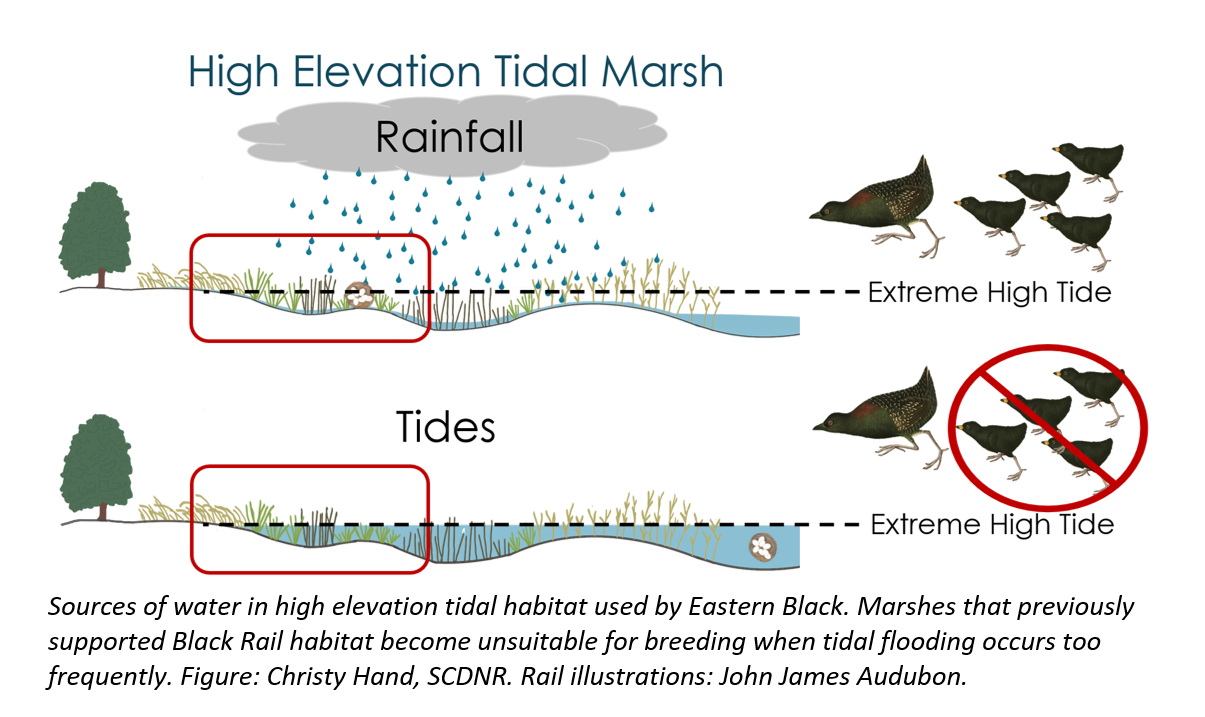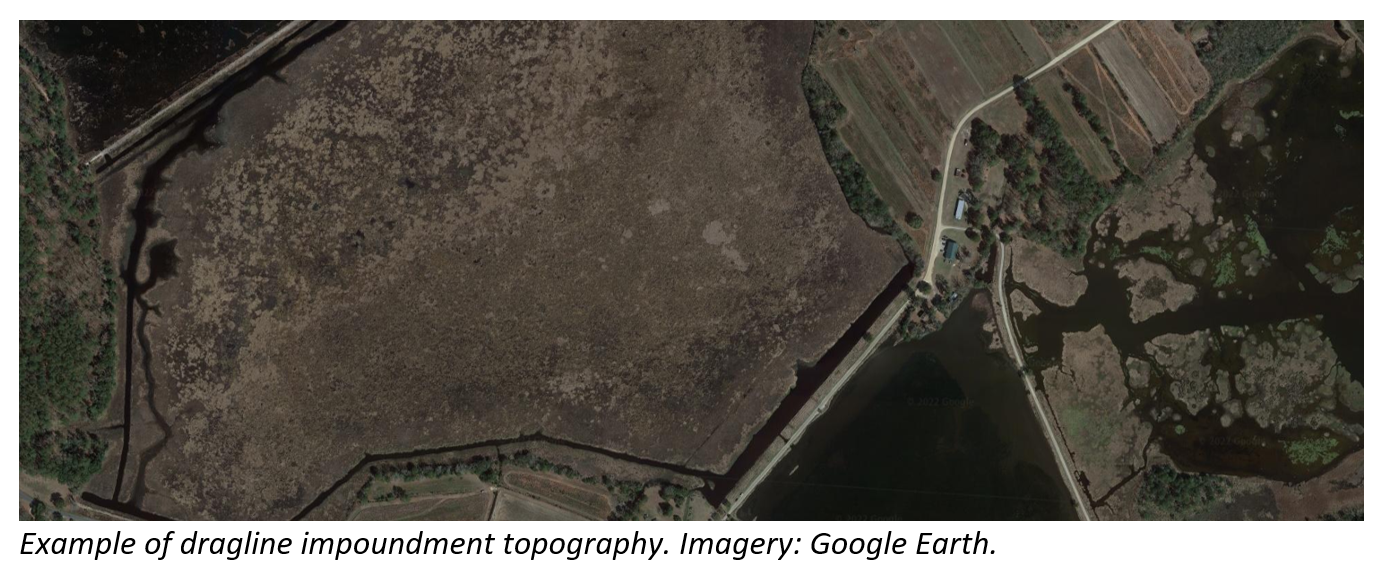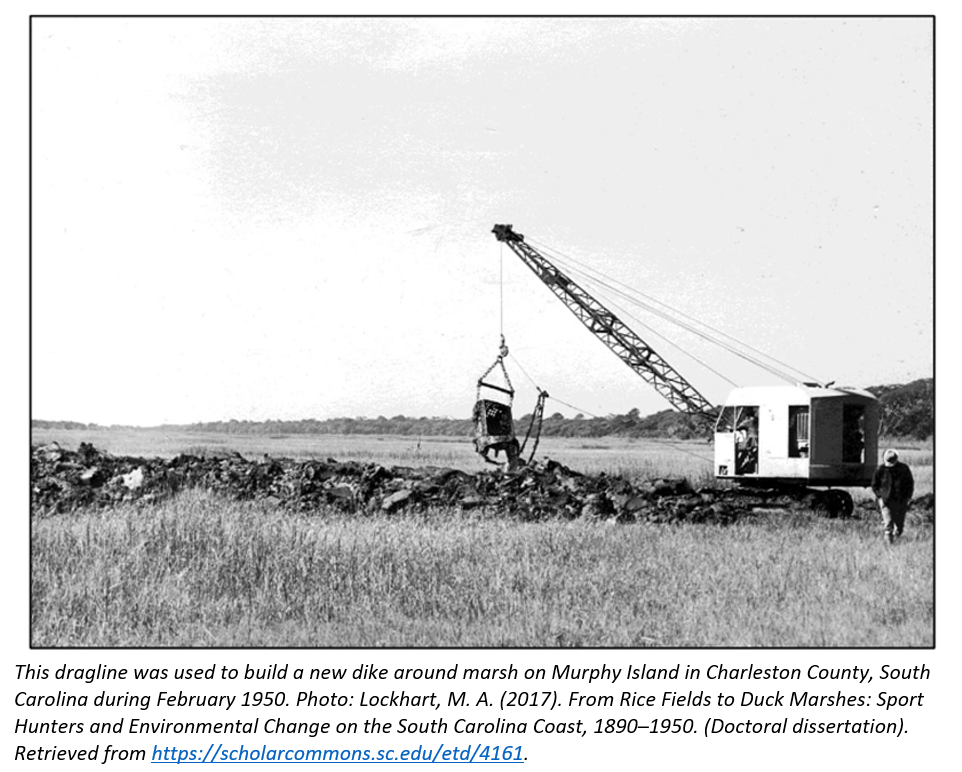Black Rail Ecology and Habitat Requirements
A pair of Eastern Black Rails cares for their brood of young chicks. Adults use the “ink-ink-ink” vocalization to call the chicks to them as they forage. (Video: Christy Hand/SCDNR, taken under SCDNR research permit BB-22-06).
Black Rails are small predominantly dark gray marsh birds with dappled white spots on their backs and flanks, and bright red eyes. Due to their very secretive habits and reluctance to emerge from marsh vegetation, Black Rails are rarely seen but instead are known by their distinctive vocalizations. Commonly heard calls are described as “kickee-doo”, “churt”, and “grr-grr-grr”.
A male Eastern Black Rail vocalizes using the “kickee-doo” call. (Video: Christy Hand/SCDNR, taken under SCDNR research permit BB-20-06)
Key Habitat Characteristics
Topography: Gently sloping or slightly lumpy terrain. Wetlands with subtle elevational differences are ideal because depressions hold pools of shallow water where rails can feed on invertebrates and wetland plant seeds while ridges provide drier habitat for nesting and brooding chicks and refugia when water levels fluctuate. Connectivity to even higher grassy upland habitat provides a refuge for rails during extreme flooding events.
Vegetation: Dense herbaceous vegetation providing both a low canopy of overhead cover and openings or tunnels at the ground level allowing movement through the marsh without emerging into the open.
Water: Shallow brackish or fresh water. Areas of moist soil or pools less than an inch deep. Relatively consistent levels but not stagnant. Wetland conditions must be maintained to support abundant macroinvertebrates, which, along with seeds, provide food for rails.
Soil: Hydric wetland soil rich in organic material that retains moisture and supports suitable plants and invertebrates.
Threatened Species Status
The Eastern subspecies of the Black Rail (Laterallus jamaicensis jamaicensis) was listed as federally threatened under the Endangered Species Act during 2020. Detailed information was published in the Federal Register (https://www.fws.gov/species-publication-action/threatened-species-status-eastern-black-rail-section-4d-rule-0). Current information about the listing and associated regulations can be found at https://ecos.fws.gov/ecp/species/10477.
Timing of Breeding and Flightless Molt
Through years of monitoring and research, the South Carolina Department of Natural Resources has determined the timing of two periods of vulnerability that offer the greatest opportunities to influence the survival of chicks and adults. These are the nesting and brood rearing period, which is from April 1 to September 30 in South Carolina and the flightless molt period, which is from August 1 to October 31. Black Rails have limited mobility and particularly high food requirements during these periods, so maintaining suitable habitat conditions can improve outcomes for rails.
As the smallest rail species in North America, with a tarsus (lower leg) length of less than an inch and particularly secretive habits, the Black Rail has very specific habitat requirements. During the breeding season, Black Rails are typically found in wetlands and wet meadows containing consistently shallow water and dense herbaceous cover. Wetland areas with subtle elevational differences are ideal because depressions hold pools of shallow water where rails can feed on invertebrates and wetland plant seeds (such as saltmarsh bulrush) while ridges provide drier habitat for nest building and refugia when water levels fluctuate.
Although their size and specificities present challenges, other aspects of their ecology are encouraging. Black Rails typically lay 6-8 eggs per clutch and are capable of successfully raising multiple broods of chicks within a breeding season under ideal conditions.
Habitat Types
Tidal Marshes
The high elevation zone of tidal marsh historically has been the primary type of habitat used by Black Rails on the Atlantic and Gulf Coasts of the U.S. In these areas, infrequent inundation typically occurs only during the highest tides (“King Tides”). Water levels in these marshes are more dependent on rainfall than tidal influence. Tidal marsh habitat high enough to support breeding Black Rails is very rare and declining in South Carolina.
Impoundments
For decades, managed tidal impoundments have supported the majority of the Black Rails breeding in South Carolina. These impoundments are maintained and managed primarily to provide winter habitat to waterfowl but also benefit a variety of waterbird species.
Historic Rice Fields: Impoundments built by enslaved Africans during the 18th and 19th centuries for the purpose of rice production. These impoundments contain relatively level fields where rice was grown divided by quarter drains, which are linear canals that allow water to move more quickly through the wetland. Tidal and inland historic rice fields are abundant in coastal South Carolina but very rarely offer suitable physical characteristics for Black Rails unless the topography is altered in a way that creates high elevation ridges or islands.
Dragline: Managed tidal impoundments built using draglines to construct dikes around tidal marshes during the 20th century. The construction technique resulted in beds or fields with uneven elevations including shallow depressions and subtle hills. Some of these marshes were used for hay production and cattle grazing during 1950s and others were built to provide waterfowl hunting opportunities. These impoundments are relatively uncommon but provide the majority of the breeding habitat used by Black Rails in South Carolina.
Wet Pastures
With supplemental irrigation to supplement rainfall, wet pastures may offer habitat for Black Rails. With active management, wet pastures and fields have the potential to provide breeding habitat for Black Rails. Irrigation to ensure adequate water is consistently available and mowing during the non-breeding season to promote herbaceous vegetation can be used to create and maintain desirable conditions.













